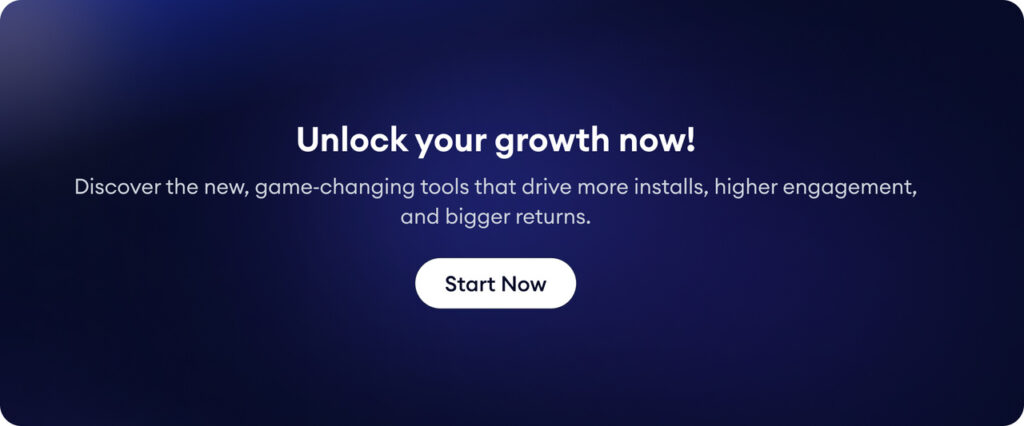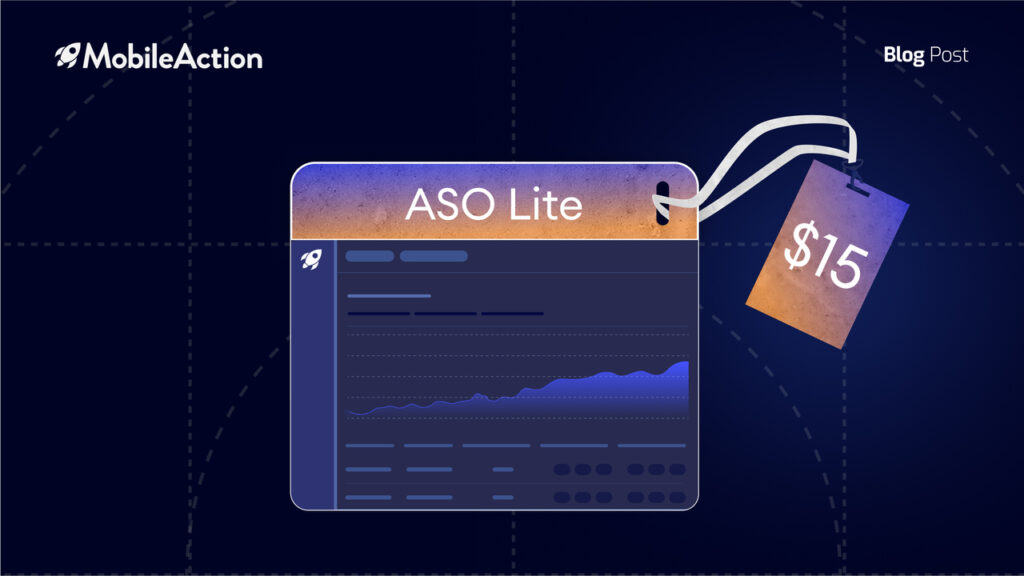So, you’ve built an awesome app – great! But getting it discovered among millions of others? That’s the tricky part. This is where ASO for indie developers comes in.
ASO is basically SEO for app stores – it helps your app get noticed in App Store and Google Play search, and convinces people to hit “Install.” In fact, search is the primary way users find apps.
According to Apple, 60% of App Store downloads come directly from search queries, and nearly half of those searches are generic (like “fitness tracker” or “budget app”) – users looking for solutions, not specific brands.
For indie developers with limited marketing budgets, mastering ASO is the best way to level the playing field and start getting organic downloads.
In this post, we’ll go through actionable ASO tactics that every indie dev (for Android and iOS) should master in 2025: from smart keyword strategies and A/B testing your store listing, to optimizing visuals, localizing for global reach, and generating more reviews.
Keyword research and strategy: Find your niche
When it comes to ASO for indie developers, keywords are the cornerstone. They help your app show up when users search in the store.
The goal is to determine what words people might type when searching for an app like yours, and ensure that your app listing contains those terms.
Think like a user
Brainstorm terms related to your app’s core function, features, and target audience. If you made a habit tracker app, users might search “daily planner,” “habit tracker,” “to-do list,” etc.
Remember, many users search for solutions rather than specific app names, so include words that describe the problem your app solves. This mindset is the foundation of ASO for indie developers.
Research the competition
Look at the top apps in your category – what keywords do they use in their titles or descriptions?
Use MobileAction’s keywords inspector to find out which keywords they rank for. MobileAction lets you spy on competitor keywords and popularity.
A/B testing: Optimize through experimentation
For ASO for indie developers, experimentation is everything. Would a different icon get more people to download? What if you highlight a different feature in your first screenshot?
A/B testing lets you answer these questions with data instead of guesswork. It means showing different versions of your app store listing to different users to see which one performs better (i.e., gets more installs).
Even small tweaks can make a surprising difference in conversion.
Where can you A/B test?
On Google Play, it’s built in and free – the Play Console has “Store Listing Experiments” where you can test variants of your icon, screenshots, description, etc., on a percentage of live traffic.
On Apple’s App Store, true A/B testing became possible with Product Page Optimization (introduced in late 2021). In App Store Connect, you can create up to three variant pages (different screenshots, app icon, etc.) to test against your original.
What to test?
Focus on the elements that most impact a user’s first impression:
- App Icon: This is often the first thing users see. Testing different icon designs or colors is a great, high-impact experiment. Sometimes, a minor change (brighter colors or a clearer symbol) can boost conversions.
- Screenshots: These showcase your app’s features and UI. You can test the order of screenshots (which one is shown first), try adding explanatory text vs. no text, or even different styles (device frames vs. clean shots).
- App Title/Subtitle or Short Description: On Google Play you can run experiments on text like the short description. Perhaps test a title that includes a keyword vs. one that focuses on branding. Just be careful not to confuse existing users with totally off-the-wall titles. Keep it relevant and professional.
- Feature Graphic / Video Preview: On Google Play, the feature graphic (the banner image) can be tested by trying different imagery or slogans. For apps that have a promo video, you could test having a video vs. no video to see if it helps or hurts installs (videos can boost understanding but if they don’t engage users, some might not watch them).
Each of these adjustments supports ASO for indie developers’ best practices.
Localization: Go global with your ASO
Global reach is another pillar of ASO for indie developers. Why limit your app to one language or region if it could be popular worldwide? Localization is the tactic of translating and adapting your app store listing (and ideally the app itself) for different languages and cultures.
It’s one of the highest-ROI ASO moves because it opens your app up to entirely new markets with relatively little effort.
Consider this: not everyone searches the app stores in English. If you only have an English description and keywords, you’ll be invisible to users searching in Spanish, Japanese, Hindi, and other languages.
By adding localized app listings, you can dramatically increase your reach. And it’s not just about translation – sometimes you have to tweak the messaging for cultural relevance. Still, even a basic translation is far better than showing English to a non-English speaker.
What to localize?
At minimum, localize your app title, keywords, and description for other major languages. Both Apple and Google allow you to provide translations for many locales via their consoles. Also, localize screenshots and video captions if they contain text – a user is more likely to download if the content is in their language. Proper keyword translation is at the heart of ASO for indie developers.
Prioritize markets
You don’t have to translate into 30 languages at once. Look at where your app is getting downloads or interest. Commonly, indie devs localize their games into Spanish, French, German, Chinese, and Japanese – these languages cover huge global markets. If your app is relevant in certain regions (e.g., maybe your app is about European train travel, then localize it into European languages first). Also consider cross-localization – e.g. localize Spanish for the U.S. market too (since many users in the US search in Spanish as well), not just for Spain or Latin America.
Tips: Localize your keywords too – don’t just translate literally, but find out what terms locals search for. For instance, a “truck” in English might be called a “lorry” in UK English, or an “apartment finder” app in Spanish might use the term “pisos” (common in Spain) versus “apartamentos” elsewhere.
The bottom line is, indie developers can greatly benefit from thinking globally. You might find that your app takes off in a country you never anticipated, just because you made the effort to speak the users’ language. It’s like unlocking new levels for your app’s growth.
#Reach global audiences in their languages with MobileAction. Check MobileAction’s localization tool to expand your reach!
Review and ratings: Leverage user feedback
Social proof is critical in ASO for indie developers. Ratings and reviews are the social proof for your app. For an indie developer with no big brand name, a high star rating and glowing reviews can be the deciding factor for a user on the fence.
Not only that, app stores take ratings into account – an app with a higher average rating and a good volume of ratings can rank better and convert better.
Consider the impact: moving your app’s rating from mediocre to great can skyrocket conversions.
Moreover, users often have their own filters – many won’t even consider downloading an app that’s rated below 4 stars. So, you want to aim for that 4.0+ star territory.
So, how can you, as an indie dev, boost your ratings and get more positive reviews?
-
Build a quality app
First and foremost, no ASO hack substitutes for a genuinely good app. Make sure your app is stable (few crashes), delivers on its promises, and provides a great user experience. Happy users = good ratings. Also, keep your app updated; both users and app stores favor apps that are actively improved (some evidence suggests Apple even rewards regular updates with better visibility).
-
Ask for ratings (nicely and at the right time)
The simplest way to get more reviews is to prompt your users in-app. Use these prompts wisely: typically, after a user has had a positive interaction. For example, after a user completes a task, levels up, or uses your app a few times, you can trigger the prompt: “Enjoying the app? Mind leaving a rating?”
-
Make it easy to give feedback
Provide a clear way for users to contact you (e.g., support email, feedback form) within the app. Sometimes users just vent in reviews because they have no other outlet. If you catch their issue directly, you might solve it and turn them into a happy reviewer later. Some indie devs even respond personally to support emails and then gently ask, “Glad I could help – if you’re enjoying the app, would you consider giving it a rating on the store?” A personal touch can go a long way.
-
Avoid shady tactics
It should go without saying, but do not buy fake reviews or ratings. Both Apple and Google will punish apps for suspicious review activity, potentially removing your app or resetting its reviews. Also, do not incentivize reviews (like “get a free upgrade for 5 stars”) – that’s against guidelines. Honest, organic reviews are the way to go.
-
Respond to reviews
Both app stores allow developers to publicly respond to user reviews. Take advantage of this, especially for negative reviews. A polite and helpful response to a 1-star review, offering to fix the issue or already addressing it in an update, can sometimes prompt the user to update their rating. Plus, new potential users see these responses, and it shows you as a caring, active developer, which builds trust. Thank users for positive reviews too; it encourages others.
-
Quantity matters (to a point)
Having some reviews is important (nobody wants to download an app with zero reviews). But after a certain point, the average rating is more important than the sheer number of reviews. Focus on maintaining a good average. If your app is new, you might consider a soft launch to gather feedback and ratings in one country before a broader launch, so you can launch globally with a decent rating.
In short, nurture your user base. Happy users will be your app’s evangelists in the reviews section. By actively managing and encouraging ratings, indie developers can significantly improve their app’s appeal and ASO performance.
Performance analytics: Measure, analyze, and adapt
Finally, let’s talk about analytics – the glue that holds all these ASO tactics together and tells you if your efforts are paying off. Data-driven iteration sits at the heart of ASO for indie developers.
As an indie developer, you should adopt a data-driven mindset: every change you make (new keywords, new icon, a localization, etc.) yields data that you can analyze to guide your next steps.
The beauty of digital platforms is that you get feedback in numbers, so use it! Key metrics to watch:
-
Impressions & Conversion Rate
Both Apple App Store Connect and Google Play Console will show you how many people see your app listing (impressions) and how many download it (conversion). For example, if 1,000 people viewed your page and 250 installed, that’s a 25% conversion rate. If you make a change (say, new screenshots) and the conversion rate goes up to 30%, that’s a win. Track these metrics over time and after each major ASO change. It’s literally like your report card for how appealing your listing is.
-
Keyword Rankings
Use ASO tools or manual checks to see where your app ranks for your target keywords. If you were at #50 and now you’re #20 for “budget app”, progress! Many tools can send you daily or weekly reports. If some keywords aren’t moving, consider swapping them out or checking if the competition for that keyword has also grown.
-
Download Sources
In the Google Play Console, under User Acquisition, you can see how many installs came from Search, Browse, and external sources, as well as the top search terms that led to your app (if you have enough volume). App Store Connect also shows metrics for Search, Browse, App Referrers, and more. This is gold for understanding where to focus. If you see that 80% of your downloads come from search engines, then improving your search keywords is crucial. If a lot come from browse/featured, then maybe visuals and ratings (which influence browse conversion) are key.
-
User Behavior & Engagement
While not classic “ASO” metrics, things like retention (do users stay or uninstall quickly?), session length, and active users can indirectly affect ASO. Why? Because Google Play’s algorithm in particular takes into account app quality signals like crash rate, uninstall rate, usage engagement, etc., when ranking apps. If users frequently install your app and then uninstall it in a day, that might hurt your ranking over time (it signals disappointment).
-
Competitor Tracking
Keep an eye on your competitors’ metrics if possible. Some ASO tools let you track a competitor’s ranking for keywords, download estimates, and more. If a competitor suddenly jumps in rank, check what changed – did they update their listing? New icon? Maybe they got featured. This intel can give you ideas or warnings (e.g., if a competitor starts using a new keyword that you also target, you might need to double down or find a new niche).
Also, treat ASO as an ongoing cycle: research → implement → measure → tweak → repeat. The app store algorithms change over time, user trends evolve, and new competitors arrive, so what works this year might need updating next year. Regularly review your app’s performance. Set a reminder, maybe monthly or quarterly, to evaluate your ASO KPIs and decide on any changes or tests to run.
Final words
ASO for indie developers is a must-master skill in 2025. It might seem like a lot – keywords, screenshots, reviews, analytics – but the payoff is huge. ASO done right means free, organic installs and a strong foundation for your app’s success.
Now, it’s action time! 💪 Pick one of these tactics and apply it to your app today. For example, you could start by updating your keyword list and adjusting your title and description. Or set up a screenshot experiment on Google Play. Or maybe implement that in-app review prompt you’ve been postponing. Each improvement will stack up and move the needle for your app’s growth.
Ready for a faster start? ASO Lite is our brand-new, $15-per-month package built for ASO for indie developers who need results without the complexity. Get essential keyword tracking, store-listing insights, and competitor intel in one streamlined dashboard. Start your free 7-day trial of ASO Lite today and see how quickly your downloads can grow!
Remember, every indie success story has a bit of ASO magic behind it – and now you have the playbook. Stay patient, keep experimenting, and learn from your audience’s behavior. With consistent effort, you’ll see your app climb the ranks and those download numbers rise. Good luck, and happy optimizing!






